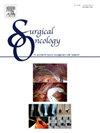Comparison of robotic and natural orifice transluminal endoscopic surgical technique procedures in patients undergoing sentinel lymph node biopsy during endometrial cancer surgery
IF 2.4
4区 医学
Q3 ONCOLOGY
引用次数: 0
Abstract
Objective
The role of sentinel lymph node dissection in the surgical management of endometrial cancer limited to the uterus is gaining recognition. The safety and applicability of two methods were assessed by examining the results of our patients in the identification of the sentinel lymph node during endometrial cancer surgery. The methods were robotic surgery, a critical component of minimally invasive surgery, and the vNOTES (Natural Orifice Transluminal Endoscopic Surgery Technique), which has recently been introduced for malignant indications.
Methods
Patients who had endometrial cancer surgery at our center employing robotic and vNOTES technologies between January 2023 and June 2024 were included in this retrospective study. We conducted the dissection of sentinel lymph nodes utilizing a near-infrared technology camera method with indocyanine green (ICG) in both robotic and vNOTES techniques. The patients' records were retrospectively obtained from patient files and hospital records. Among the 76 patients who underwent surgery for endometrial cancer, 24 were treated with vNOTES surgery, whereas 52 received robotic surgery.
Results
No statistically significant differences were seen between the two groups for age (p = 0.447), body mass index (p = 0.506), prior abdominal operations (p = 0.209), predicted blood loss (p = 0.155), and surgical duration (p = 0.298). The detection rates of sentinel lymph nodes (SLN) were similar across the groups: 97 % (n = 50) in the robotic group and 96 % (n = 23) in the vNOTES group (p = 0.493). The only statistically significant difference was observed in postoperative pain scores at the 12th hour, which were lower in the vNOTES group (p = 0.023).
Conclusion
The vNOTES technique demonstrates comparable sentinel lymph node detection rates to robotic surgery in the management of uterine endometrial cancer. Moreover, it has the advantage of markedly less postoperative discomfort. vNOTES is a secure and efficacious minimally invasive option, especially for patients with comorbidities or those deemed unsuitable for robotic surgery.
子宫内膜癌手术中前哨淋巴结活检的机器人与自然腔内内镜手术技术的比较
目的前哨淋巴结清扫术在局限于子宫的子宫内膜癌手术治疗中的作用越来越受到重视。通过检查我们的患者在子宫内膜癌手术中前哨淋巴结识别的结果,评估两种方法的安全性和适用性。机器人手术是微创手术的关键组成部分,而vNOTES(自然孔腔内窥镜手术技术)最近被引入用于恶性适应症。方法回顾性研究于2023年1月至2024年6月在我中心采用机器人和vNOTES技术进行子宫内膜癌手术的患者。我们在机器人和vNOTES技术中使用近红外技术与吲哚菁绿(ICG)相机方法进行前哨淋巴结清扫。回顾性地从患者档案和医院记录中获得患者记录。在76名接受子宫内膜癌手术的患者中,24人接受了vNOTES手术,而52人接受了机器人手术。结果两组患者年龄(p = 0.447)、体重指数(p = 0.506)、既往腹部手术(p = 0.209)、预测失血量(p = 0.155)、手术时间(p = 0.298)差异均无统计学意义。前哨淋巴结(SLN)检出率各组相似:机器人组为97% (n = 50), vNOTES组为96% (n = 23) (p = 0.493)。两组术后12小时疼痛评分差异有统计学意义,vNOTES组疼痛评分低于对照组(p = 0.023)。结论vNOTES技术在子宫内膜癌的前哨淋巴结检出率与机器人手术相当。此外,它还具有明显减少术后不适的优点。vNOTES是一种安全有效的微创选择,特别是对于有合并症或被认为不适合机器人手术的患者。
本文章由计算机程序翻译,如有差异,请以英文原文为准。
求助全文
约1分钟内获得全文
求助全文
来源期刊

Surgical Oncology-Oxford
医学-外科
CiteScore
4.50
自引率
0.00%
发文量
169
审稿时长
38 days
期刊介绍:
Surgical Oncology is a peer reviewed journal publishing review articles that contribute to the advancement of knowledge in surgical oncology and related fields of interest. Articles represent a spectrum of current technology in oncology research as well as those concerning clinical trials, surgical technique, methods of investigation and patient evaluation. Surgical Oncology publishes comprehensive Reviews that examine individual topics in considerable detail, in addition to editorials and commentaries which focus on selected papers. The journal also publishes special issues which explore topics of interest to surgical oncologists in great detail - outlining recent advancements and providing readers with the most up to date information.
 求助内容:
求助内容: 应助结果提醒方式:
应助结果提醒方式:


